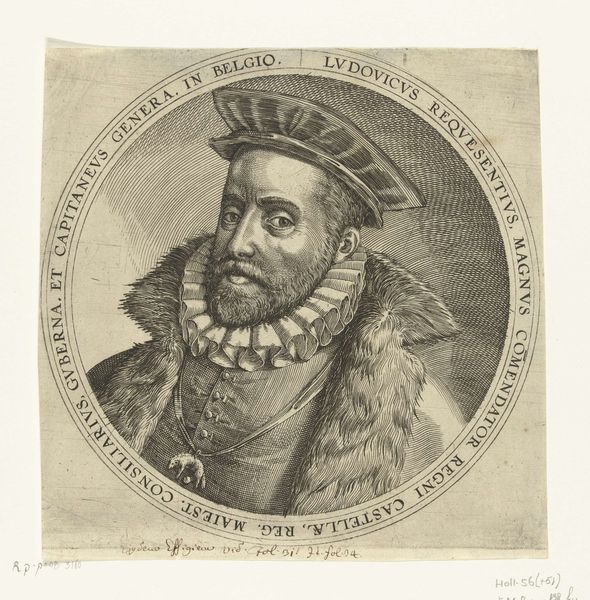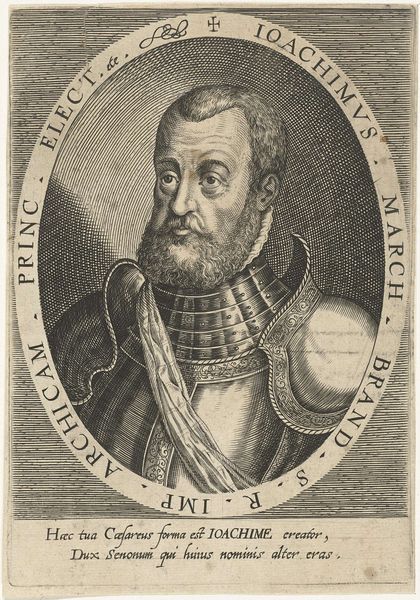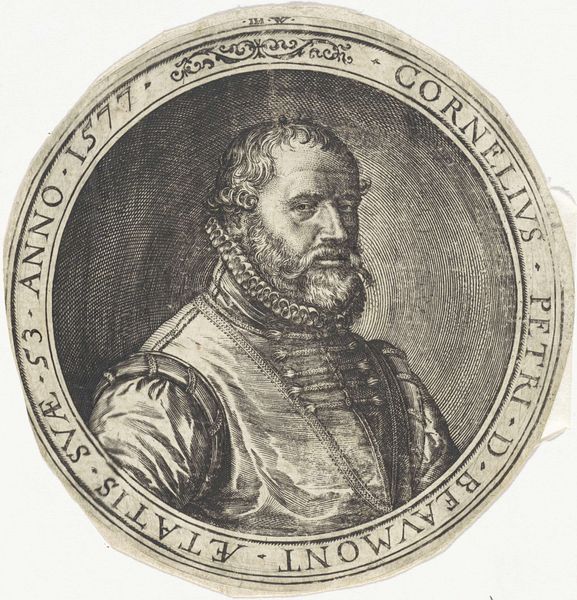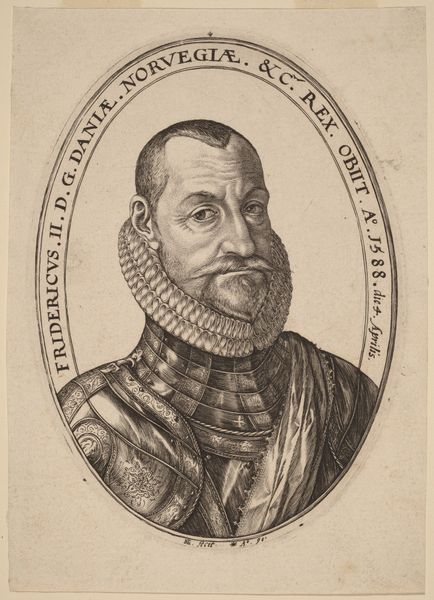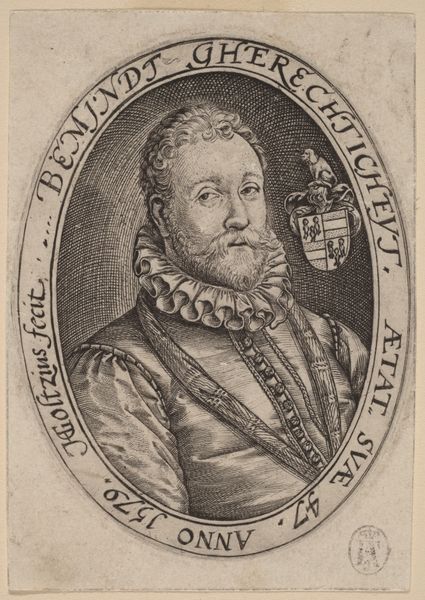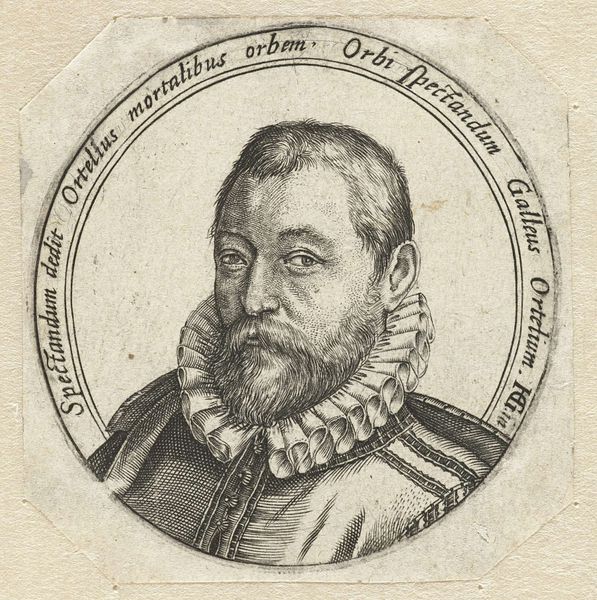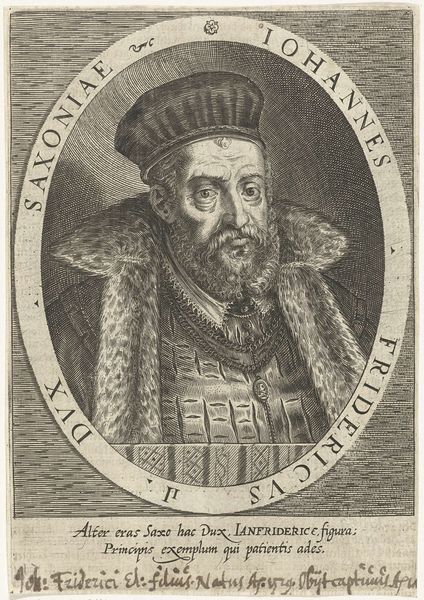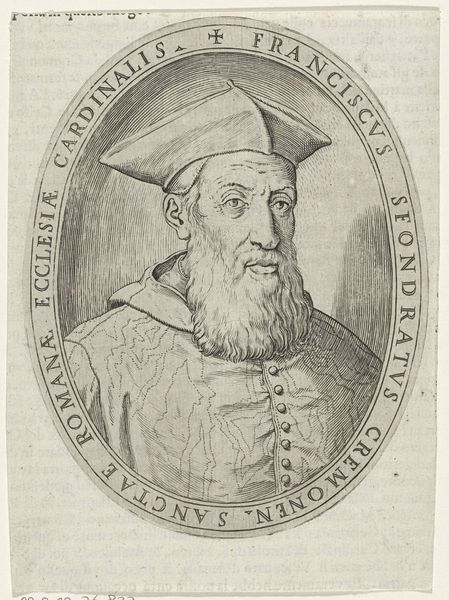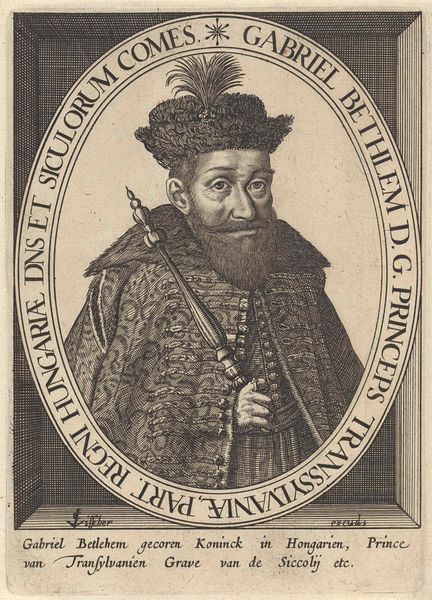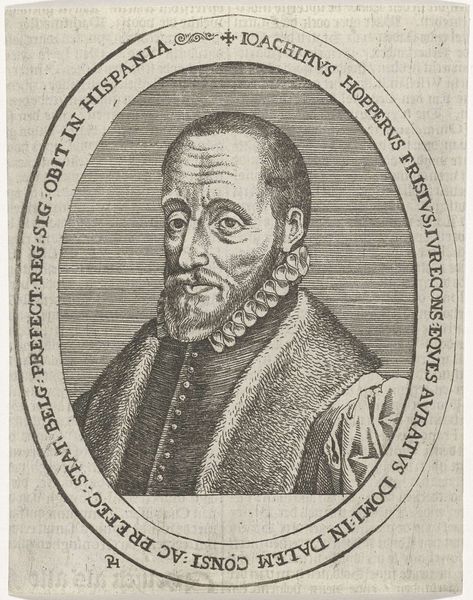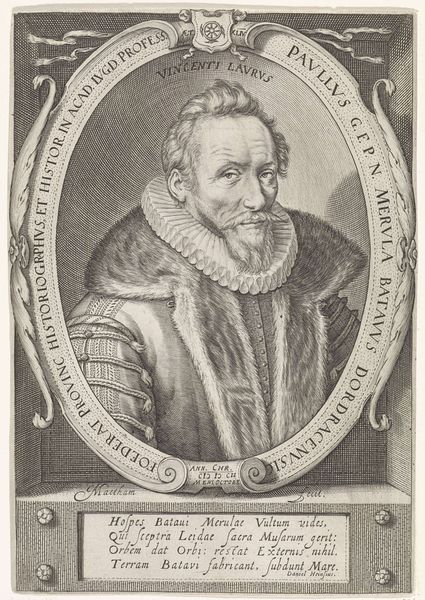
engraving
#
portrait
#
old engraving style
#
caricature
#
figuration
#
11_renaissance
#
classicism
#
line
#
history-painting
#
academic-art
#
engraving
Dimensions: height 188 mm, width 187 mm
Copyright: Rijks Museum: Open Domain
This is Frans Hogenberg’s "Portret van Karel V," an engraving made around the late 16th century. During this time, the Holy Roman Empire was in tumult; the Protestant Reformation had begun, challenging the Catholic Church and the established order. Portraits like this were carefully crafted to project power and legitimacy. Notice how Charles V is depicted with the symbols of his authority: the imperial garb, the inscription which translates to "Charles V, by the grace of God, Emperor of the Romans, always august, Caesar, most invincible." Yet, there’s a palpable tension here. Hogenberg was working in the Netherlands, a region increasingly resistant to Spanish rule under Charles V. The image seems to negotiate the line between representing imperial might and the burgeoning sense of Netherlandish identity and autonomy. What does it mean to depict a ruler whose power is both divinely ordained and increasingly contested? The weight of history and the stirrings of change seem etched into Charles V's very countenance, making this not just a portrait, but a mirror reflecting the complex dynamics of a society on the brink of transformation.
Comments
No comments
Be the first to comment and join the conversation on the ultimate creative platform.
